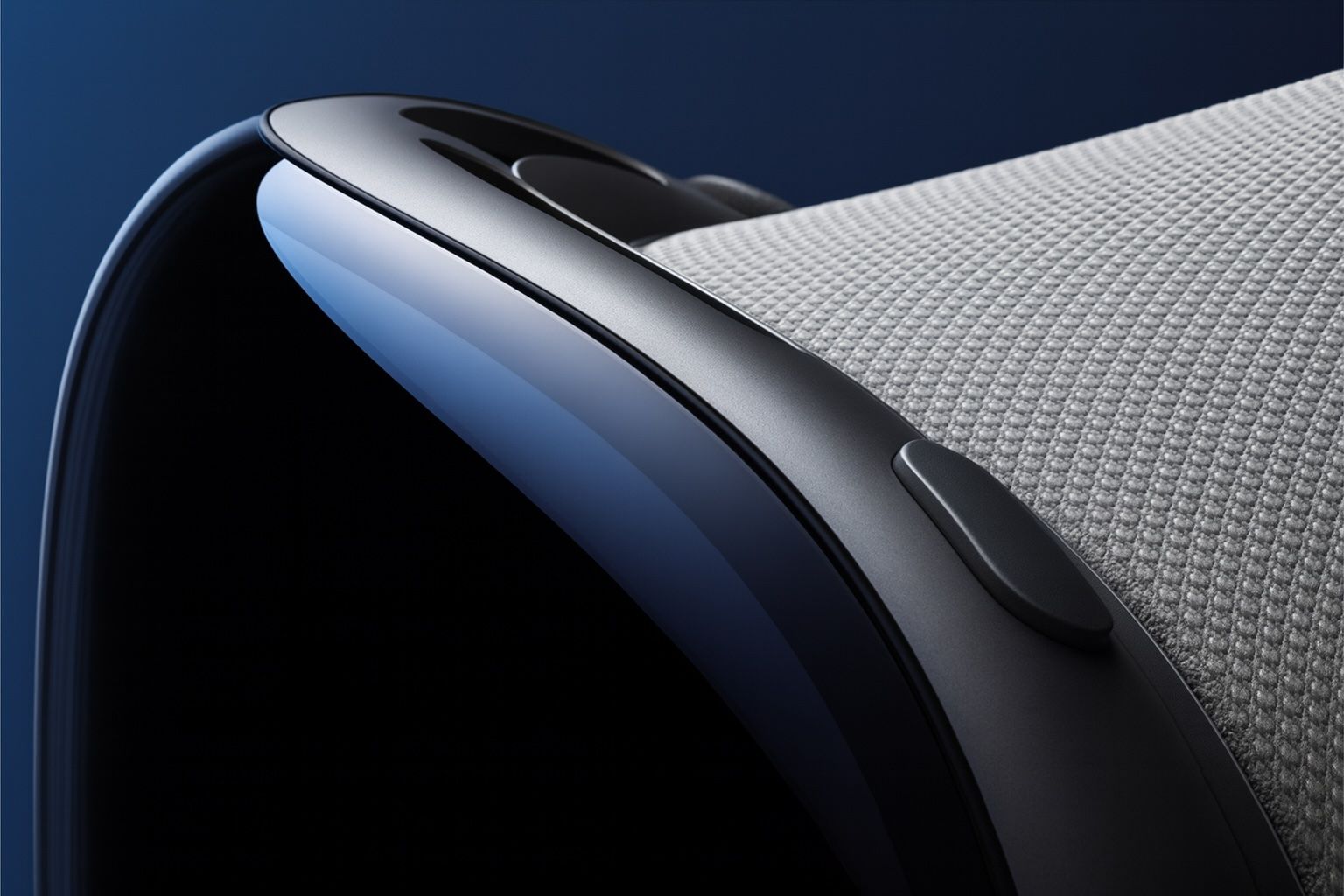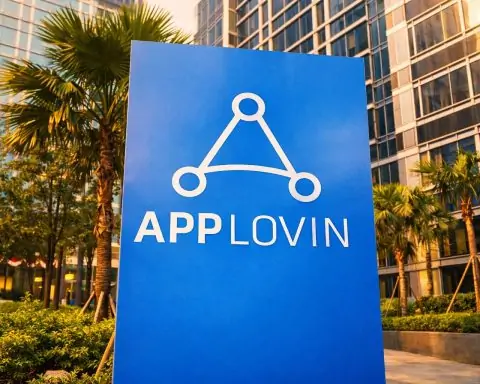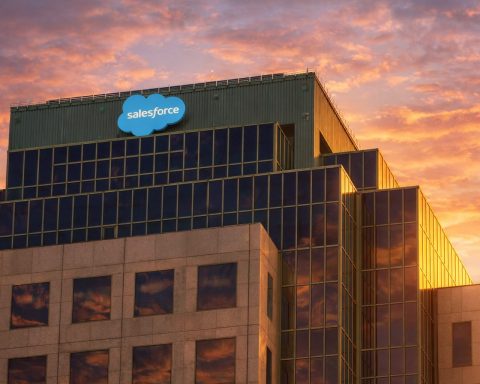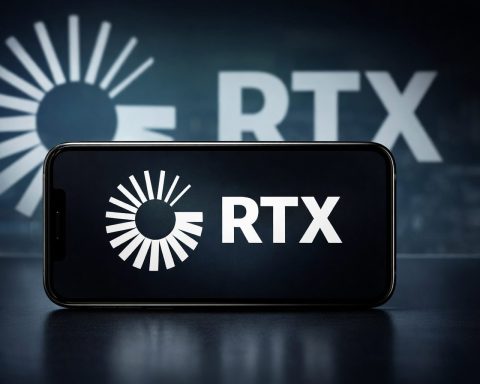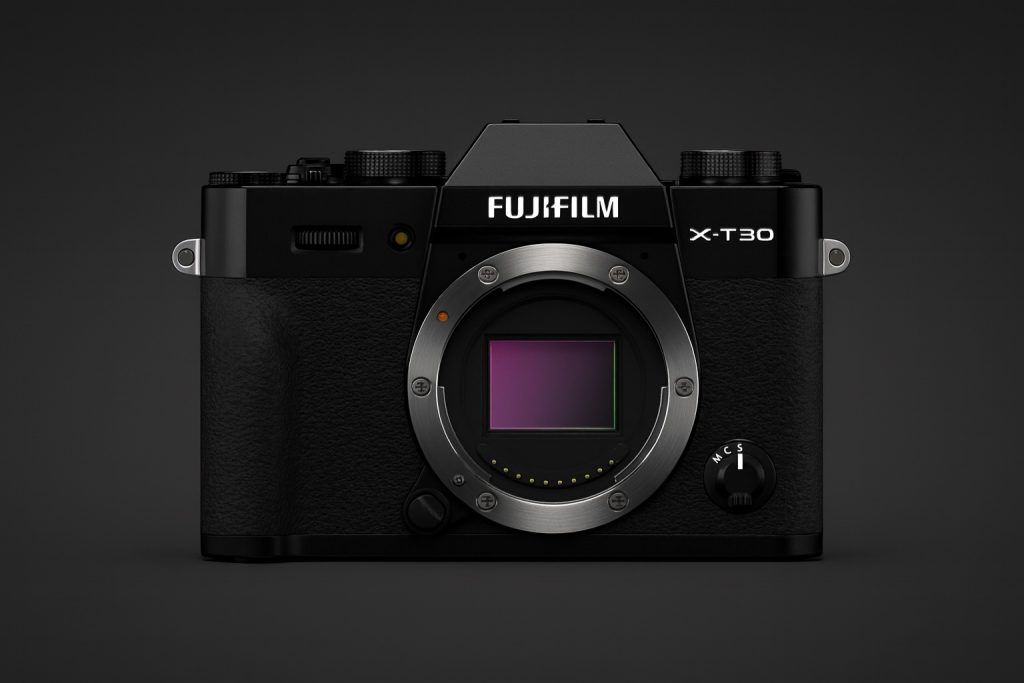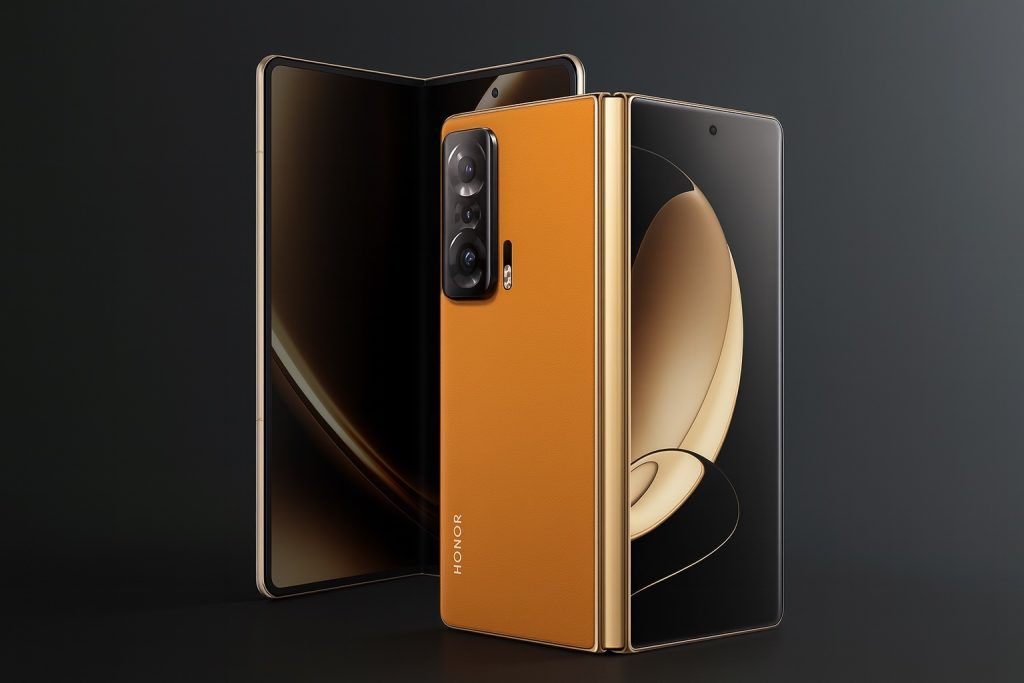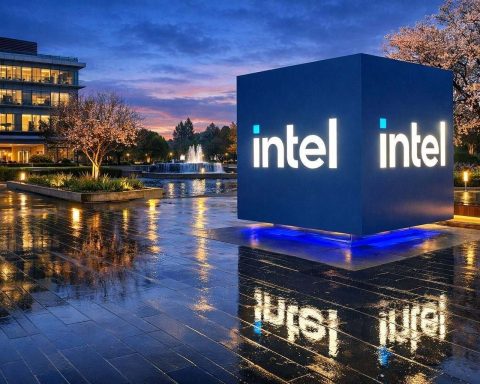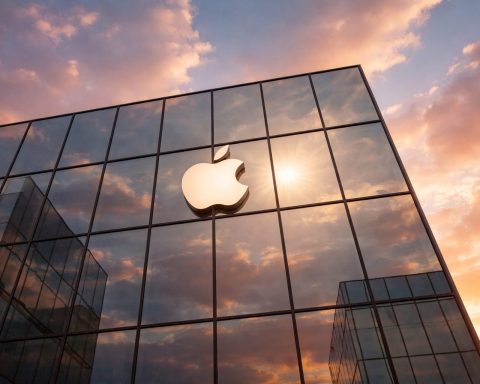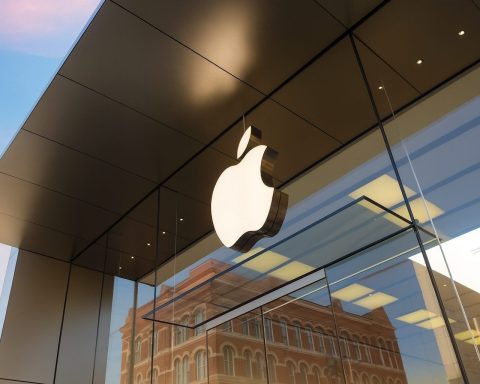- Next-Gen Headset Confirmed: A new Apple Vision Pro headset (model A3416) was spotted in an FCC filing, essentially confirming Apple’s work on an upgraded “Vision Pro 2” device [1]. The filing’s diagrams show a headset resembling the current Vision Pro, indicating Apple isn’t overhauling the exterior design this round.
- M5 Chip Upgrade: The refreshed headset is rumored to launch by late 2025 with a much faster Apple M5 processor, replacing the M2 chip in the original model [2]. Despite the internal upgrade, it’s expected to retain the same $3,499 price as the first-generation Vision Pro [3].
- Improved Comfort Strap: While the new device looks similar outwardly, Apple is addressing a key complaint – weight and comfort. The headband is being redesigned to better distribute the ~1.4 lb weight and “reduce neck strain and head pain,” according to Bloomberg’s sources [4]. This is a welcome change, as early Vision Pro testers found the original headstrap could get uncomfortable during long sessions.
- Connectivity & Code Leaks: The FCC tests show the next Vision Pro still uses Wi-Fi 6 (with no upgrade to Wi-Fi 6E or 7) [5]. Notably, Apple’s own code leaks already hinted at the M5 chip – a snippet discovered in Apple’s software confirmed an M5-powered Vision Pro, settling debates over whether Apple would use an M4 or M5 for the upgrade [6].
- Apple’s XR Roadmap: Insiders say this 2025 headset is a stopgap spec bump to keep momentum in Apple’s “spatial computing” efforts [7]. Apple had been developing a cheaper, lighter “Vision Air” model for 2027, but Bloomberg reports that project (code-named N100) is now on hold as Apple pivots to AR smart glasses instead [8]. In fact, Apple is working on Ray-Ban-style smart glasses with voice control and gesture input, aiming for a 2027 launch as a more mainstream wearable [9].
FCC Leak Confirms Apple’s Next Vision Pro Headset
Apple’s next-generation Vision Pro headset has effectively been revealed through a U.S. Federal Communications Commission (FCC) filing. The FCC published documents in late September describing an Apple “Head Mounted Device” with model number A3416, which eagle-eyed observers quickly recognized as a new Vision Pro model [10]. This kind of regulatory filing typically surfaces shortly before a product launch, suggesting that an updated Vision Pro could be imminent. In this case, the filing even included a simple diagram of the device, essentially confirming it looks just like the current Vision Pro headset [11]. In other words, no radical redesign is in store – externally, the upcoming model appears almost identical to Apple’s first mixed-reality headset.
The FCC documents don’t spill all the specs, but they do give some clues. For instance, the tests focus on wireless connectivity and show the new headset will stick with Wi-Fi 6 networking, with no support for newer Wi-Fi 6E or Wi-Fi 7 standards [12]. That mirrors the original Vision Pro’s capabilities. Apple had requested confidentiality on these details, but the FCC inadvertently made them public, effectively leaking Apple’s own secrets ahead of schedule [13]. Aside from wireless tech, the filing didn’t detail much hardware, but combined with other leaks and rumors, we now have a good picture of what “Vision Pro 2” will bring.
Notably, the FCC leak corroborates months of reporting that Apple has a refresh of the Vision Pro in the works. Tech journalists like Bloomberg’s Mark Gurman have been reporting since mid-2025 that Apple planned a modest “spec bump” upgrade to Vision Pro by end of the year [14]. The regulatory green light from the FCC aligns with those rumors, indicating that Apple is on track to introduce the updated device soon. Industry watchers suspect Apple could announce it before 2025 wraps up – possibly via a late-fall press release or a small media event – since the filing suggests the hardware is nearly ready to ship.
Major Upgrade: From M2 to a Powerful M5 Chip
The headline change for this new Vision Pro is on the inside. Apple is reportedly swapping out the original’s M2 chip for a much more powerful M-series processor – likely the upcoming M5 [15]. That represents a leap of at least two generations in Apple Silicon. The first-generation Vision Pro, which launched in early 2024, was powered by the M2 (a chip first introduced in mid-2022). By late 2025, that made the headset’s brain somewhat dated – in fact, the device debuted with a chip that was already about two years old [16]. The M5, by contrast, is expected to be state-of-the-art and should bring a significant performance boost and efficiency improvements.
There was initially some debate in rumor circles about whether Apple would use “M4” or “M5” for the new headset’s chip. Famed analyst Ming-Chi Kuo consistently predicted the upgrade would jump straight to M5, while Bloomberg’s Mark Gurman at one point suggested it might end up being an M4 instead [17]. However, recent evidence has tilted the odds toward M5. In August, developers found leaked Apple code referencing an M5-powered Vision Pro, seemingly confirming it will indeed use the M5 chip, not M4 [18]. That leak, uncovered by a MacRumors contributor, effectively settled the M4 vs. M5 question – and it aligns with Kuo’s reports that Apple would make a big generational jump in processing power.
What will the M5 chip bring to the table? For one, a major boost in raw performance. The current Vision Pro’s M2 chip is no slouch, but Apple’s silicon has advanced quickly in recent years. A jump to M5 means the headset could run much more demanding applications and smoother graphics. According to AppleInsider, the extra horsepower could be a game-changer for VR gaming and intensive AR experiences. With the M2, there wasn’t much overhead for high-end games or complex 3D apps, but “M5 could be the step up needed to make Apple Vision Pro a true VR gaming platform,” one report noted [19]. The M5 is also expected to include architectural enhancements – for example, a more advanced Neural Engine to handle on-device AI and computer vision tasks. Indeed, Gurman has reported that Apple is testing versions of the new headset with an expanded Neural Engine, increasing the core count beyond the current model’s 16 cores to improve performance in AI-driven features [20]. That Neural Engine is crucial for things like real-time environment mapping, hand/eye tracking, and seamlessly blending virtual visuals with the real world in Vision Pro’s visionOS software.
Apple hasn’t officially revealed the M5 chip yet (it’s rumored to debut in upcoming iPad Pro and Mac updates), so specific specs are under wraps. But based on the M5’s expected generational improvements, users can likely expect faster processing, better graphics rendering, and possibly improved power efficiency – which could translate to slightly better battery life for the headset’s external battery pack. All told, the M5 upgrade positions the Vision Pro 2 to handle more advanced mixed-reality applications and gives developers more headroom to push the platform’s limits. It’s a significant mid-cycle upgrade to keep Apple’s most futuristic device on the cutting edge of performance.
New Strap Aims to Solve Comfort Issues
Beyond silicon, Apple is also tackling one of the first-gen Vision Pro’s biggest criticisms: comfort and ergonomics. The original device, built with a aluminum alloy frame, glass front, and an array of sensors, weighs roughly 1.4 pounds (over 600 grams) – and all that weight rests on the user’s head. Early testers and reviewers noted that while Vision Pro’s visuals and interface are impressive, the headset can feel front-heavy, and extended use may cause neck fatigue. Apple’s engineers appear to have taken that feedback to heart. The upcoming Vision Pro refresh will debut a redesigned head strap that promises a more comfortable fit [21].
According to Bloomberg’s Mark Gurman, the new strap is “designed to reduce neck strain and head pain.” [22] In practical terms, this likely means Apple has reworked the support structure to better distribute the headset’s weight across the head. The current Vision Pro uses a single broad strap (a “Head Band”) that wraps around the back of the head, with a top strap optional (Apple showed a top strap in demos but it wasn’t included in initial units by default). It’s not yet clear how the “Vision Pro 2” strap will differ – it could feature a new materials or an improved shape to cup the back of the head more securely, or possibly an integrated top strap for extra support. Apple has filed patents in the past for various headband designs, and code leaks have mentioned a possible “Dual Knit” band accessory, hinting at a more elaborate support system.
What we do know is Apple is addressing the pressure points that caused discomfort. The wording suggests the strap might do a better job at balancing the load to relieve pressure on the neck. This is an important quality-of-life upgrade, because even a cutting-edge AR/VR experience falters if the user feels uncomfortable wearing the device for more than a few minutes. Industry analysts note that truly reducing the Vision Pro’s weight will likely require a full redesign or new materials (possibly in a future generation), but in the meantime, a smarter strap design can help mitigate the strain [23]. Apple is essentially buying time with an interim solution until it can deliver a lighter headset down the road.
Early adopters of the first Vision Pro will be pleased to hear about the new strap, and there’s speculation that Apple might even offer this improved headband as a retrofit accessory for existing units. As one commentator noted, current Vision Pro owners are unlikely to spend another $3,499 just for a faster chip, “but if Apple’s strap solution can alleviate the weight problem, then [existing users] might invest in it” as an add-on [24]. In any case, comfort is a key factor for wearable tech, and Apple seems intent on smoothing out the rough spots in this first generation of spatial computing hardware.
Expected Launch Timing and Price
All signs point to Apple releasing this upgraded Vision Pro in the very near future. Multiple reports, now backed by the FCC filing, claim that the device is slated to launch before the end of 2025 [25] – possibly even announced within the next few weeks or months. Apple has not officially announced an event, but the company does sometimes hold product briefings in late October or November for iPads and Macs. If the M5 chip is introduced in new iPad Pro models this fall, Apple could quietly slip in the Vision Pro update at the same time. Alternatively, it might save the announcement for early 2026. However, the consensus among insiders (and the fact that certification papers are already public) is that we’ll see Vision Pro 2 debut by late 2025.
One thing that doesn’t appear to be changing is the price. Apple is expected to continue pricing this device at $3,499 – the same steep price tag as the original [26]. That figure raised eyebrows when Vision Pro was first unveiled (at $3,499, it’s far more expensive than consumer VR headsets like Meta’s ~$500 Quest 3). Apple justified it by positioning Vision Pro as a pro-grade, cutting-edge AR/VR computer with breakthrough technology (dual 4K displays, advanced cameras, custom Apple silicon, etc.). For this refreshed version, rumors suggest Apple will stick to the high price point, indicating that the upgrade is relatively incremental in terms of features. In other words, this is a premium device targeted at developers, early technology adopters, and professionals – not a sudden price cut to reach the mass market. Keeping the price the same also allows Apple to improve the specs without undercutting the value of units already sold to early customers.
It’s worth noting that the first-generation Vision Pro only began reaching customers in early 2024, and even then in limited fashion (initially only in the U.S.). Apple calls it a “pro” product and has been slow and careful with its rollout, likely to ensure the user experience and app ecosystem mature before a wide release. By mid-2025, Apple started expanding demos and was gearing up for launches in more countries. The timing of this hardware refresh suggests that Apple may upgrade the device before a broader international launch. Essentially, rather than shipping the aging M2-based model globally in 2025, Apple could release the M5-based model as the version that reaches additional markets. This way, customers in Europe and Asia might get the latest-and-greatest Vision Pro when it finally arrives in their regions. From Apple’s perspective, launching the improved model about a year after the original also keeps the product in the news cycle and maintains enthusiasm among developers who are investing in the visionOS platform.
If the headset is indeed launching soon, we can expect Apple to officially announce it – likely highlighting the new chip and any other improvements (like the comfort strap). Given that Vision Pro is a new category, Apple might not wait for a big stage event and could opt for a press release or a segment in another product’s launch event. Industry observers are watching for an announcement possibly in October 2025, since Apple often introduces new iPads/Macs in that timeframe and the M5 chip is rumored to appear there [27]. Whenever it arrives, the Vision Pro 2 will mark Apple’s first hardware update to its AR/VR lineup, coming roughly 18 months after the device’s initial unveiling in 2023.
Apple’s Broader XR Strategy: Vision “Air” and AR Glasses
The Vision Pro 2 is just one piece of Apple’s long-term plan for augmented and virtual reality devices. Despite the massive buzz around Vision Pro’s launch, Apple has always signaled that this is a multi-year journey, and the first device is only the beginning. Reports from reliable analysts provide a glimpse into Apple’s roadmap for the next few years – including lighter headsets and even smart glasses – though these plans appear to be evolving.
Initially, Apple was rumored to be developing a more affordable, slimmed-down version of the Vision Pro, often dubbed the “Vision Air.” Ming-Chi Kuo and other analysts described it as a 40% lighter mixed-reality headset aimed for 2027, achieved by using a more compact design, swapping some glass components for plastic, using magnesium alloy frames (instead of heavier aluminum), and reducing the number of cameras/sensors to cut cost and weight [28]. The Vision Air would supposedly use a lower-tier chip (perhaps an iPhone-class processor rather than a Mac-class M-chip) and come in at a much lower price point to appeal to a broader consumer market [29]. In Kuo’s roadmap, this cheaper model (code-named N100 internally) was slated for mass production in late 2027 [30], after the spec-bump Vision Pro in 2025.
However, those plans may be shifting. Bloomberg reported in October 2025 that Apple has “hit pause” on the cheaper Vision Pro variant, reallocating resources toward a more urgent project: augmented reality smart glasses [31]. According to the report, Apple internally announced that it was shelving the development of the 2027 budget headset and moving the team to focus on AR glasses [32]. These glasses are envisioned as a sleek, everyday wearable – akin to what Meta offers with its Ray-Ban Stories, but with Apple’s spin on functionality and style. In fact, supply chain analyst Ming-Chi Kuo has detailed that Apple is working on “Ray-Ban-like” smart glasses with a voice control and gesture recognition interface, aiming to debut in 2027 [33]. Early rumors suggest the first-gen Apple glasses won’t even have transparent displays; instead, they’d function more like high-tech eyewear with built-in audio, cameras, and AI-powered environment sensing [34]. The idea is these could handle tasks like taking photos, playing music, or summoning Siri for information, all while looking like ordinary glasses – a step toward mainstream wearable tech. Kuo believes this type of device could be Apple’s first XR product to achieve significant volume, potentially selling 3–5 million units in 2027 alone if it hits the market on schedule [35].
Why the pivot to glasses? It likely reflects Apple’s strategic view that true mass-market adoption of “spatial computing” will come from socially acceptable, all-day wearable devices (like normal-looking glasses), rather than bulky VR headsets. The current Vision Pro, with its ski-goggle design and sky-high price, is intentionally a niche product – Apple’s entry point for developers and enthusiasts to explore mixed reality. Apple CEO Tim Cook has even framed Vision Pro as a product that will “kickstart” the ecosystem for spatial apps, while hinting that the technology will evolve into more compact forms over time. By pausing the intermediate “Vision Air” headset, Apple can fast-track the development of AR glasses, which might have a bigger impact on the market if done right. Of course, true augmented reality glasses with transparent displays are an even harder challenge (Apple’s fully AR glasses are reportedly not expected until 2028 or later [36]). That’s why the initial version in 2027 may skip the display and focus on audio and sensors – essentially warming consumers up to the idea of wearing Apple tech on their face, without the heavy hardware.
In the meantime, Apple isn’t abandoning the Vision Pro line. The 2025 M5-based model is evidence that Apple wants to iteratively improve the high-end headset to keep it relevant. Kuo’s research notes that the M5 Vision Pro (2025) will remain a low-volume, niche product (only ~150–200k units expected in 2025) aimed at enthusiasts and developers, serving to “maintain market presence” and help Apple refine XR applications and its ecosystem [37]. Looking further out, Kuo and others predict Apple will eventually introduce a true second-generation Vision Pro around 2028, featuring an all-new design that is significantly lighter and likely cheaper, powered by that future era’s Mac-grade chip [38]. By that time, technology advancements in optics, batteries, and chips should allow a more compact headset. Until then, Apple’s strategy is twofold: incremental upgrades to the pro-level headset (like the current M5 refresh) and parallel development of new form factors (like glasses) that could bring spatial computing to the masses.
Expert Outlook
Industry experts view Apple’s rapid update of the Vision Pro as a sign of the company’s commitment to this new platform – and its responsiveness to early feedback. “The inclusion of M5 alone doesn’t feel like a massive overhaul, although it is a fair leap in chipset generations,” noted Road to VR, pointing out that the original Vision Pro launched with a two-year-old chip and wasn’t on par with the latest “Pro” Macs at the time [39]. In other words, Apple may be course-correcting by bumping specs sooner rather than later, to ensure its most ambitious device isn’t held back by last-gen silicon. The comfort improvements are also crucial. As Forrester analyst J.P. Gownder commented after the Vision Pro’s debut, widespread adoption of such devices will require them to be “lighter, cheaper, and more comfortable” over time – and Apple seems to be taking steps in that direction now, even if the first iteration was more about showcasing what’s technologically possible.
Ming-Chi Kuo, who has studied Apple’s XR plans extensively, sees the Vision Pro’s early iterations as laying groundwork. He expects Apple’s investments in software and silicon to pay off across a family of devices. The company’s ecosystem advantage – integrating hardware, software (visionOS), and services – could give it a strong lead as spatial computing gradually grows. But Kuo also cautions that Apple’s biggest challenge isn’t the hardware itself, but the AI-driven software and user experience that will make these devices truly useful [40]. The visionOS platform will need compelling apps and experiences to justify a $3,499 headset. Apple is seeding developer kits and highlighting use cases from entertainment to productivity (e.g., immersive movies, 3D design, virtual monitors for your Mac). An upgraded device with an M5 chip could enable even richer apps – perhaps moving closer to the holy grail of mixed reality gaming or advanced professional 3D workflows that were hard to achieve on the M2.
Looking at the competitive landscape, Apple’s moves come as others in the industry are also accelerating efforts in AR/VR. Meta just released the Quest 3 (a much cheaper mixed reality headset), and brands like Valve, Xiaomi, and Vivo are exploring VR devices [41]. However, Apple is unique in pursuing a seamless blend of AR and VR with a high-end approach. If the Vision Pro 2 launches as expected, it will reinforce Apple’s lead in terms of technology (with the new chip) but also underscore the company’s patience – it is still targeting developers and professionals in the near term, not rushing a mass-market AR headset until the tech (and market readiness) aligns.
Bottom Line: Apple’s next-gen Vision Pro looks set to deliver a big performance boost and some welcome comfort refinements, while sticking with the same design and price for now. The leaked FCC filing and multiple insider reports paint the picture of a “Vision Pro 2” arriving possibly within 2025, powered by an M5 chip and equipped with a better strap for extended wear [42] [43]. This upgrade should make Apple’s $3,499 headset more capable and user-friendly as the company continues to nurture its new spatial computing platform. And beyond this incremental update, Apple’s broader roadmap – from cheaper lightweight visors to eventual AR glasses – shows that the tech giant is playing the long game in defining the future of personal computing. For now, all eyes are on the anticipated Vision Pro refresh, which could be officially unveiled any day, bringing us one step closer to Apple’s sci-fi AR vision becoming an everyday reality. [44] [45]
Sources: Apple FCC filing and NotebookCheck [46] [47]; MacRumors [48] [49]; The Verge [50] [51]; 9to5Mac/Bloomberg [52] [53]; Ming-Chi Kuo via Medium [54] [55]; Bloomberg News [56]; AppleInsider [57] [58].
References
1. www.notebookcheck.net, 2. www.macrumors.com, 3. www.macrumors.com, 4. 9to5mac.com, 5. www.notebookcheck.net, 6. appleinsider.com, 7. medium.com, 8. www.bloomberg.com, 9. www.theverge.com, 10. www.notebookcheck.net, 11. www.notebookcheck.net, 12. www.notebookcheck.net, 13. www.macrumors.com, 14. www.theverge.com, 15. www.macrumors.com, 16. www.roadtovr.com, 17. 9to5mac.com, 18. appleinsider.com, 19. appleinsider.com, 20. 9to5mac.com, 21. 9to5mac.com, 22. 9to5mac.com, 23. 9to5mac.com, 24. 9to5mac.com, 25. www.macrumors.com, 26. www.macrumors.com, 27. appleinsider.com, 28. medium.com, 29. medium.com, 30. medium.com, 31. www.bloomberg.com, 32. www.bloomberg.com, 33. www.theverge.com, 34. medium.com, 35. medium.com, 36. medium.com, 37. medium.com, 38. medium.com, 39. www.roadtovr.com, 40. medium.com, 41. www.notebookcheck.net, 42. www.macrumors.com, 43. 9to5mac.com, 44. www.theverge.com, 45. www.bloomberg.com, 46. www.notebookcheck.net, 47. www.notebookcheck.net, 48. www.macrumors.com, 49. www.macrumors.com, 50. www.theverge.com, 51. www.theverge.com, 52. 9to5mac.com, 53. 9to5mac.com, 54. medium.com, 55. medium.com, 56. www.bloomberg.com, 57. appleinsider.com, 58. appleinsider.com
